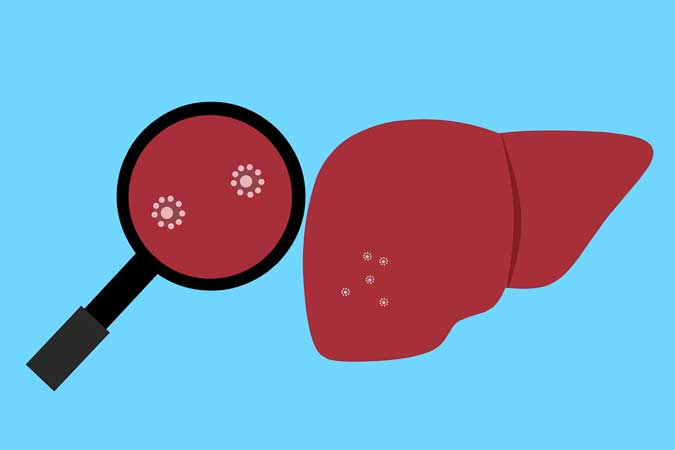DoH to streamline service delivery for viral hepatitis

By Patricia B. Mirasol
TO IMPROVE hepatitis B service delivery, the Department of Health (DoH) is including encrypted data related to the liver infection in a reporting platform that monitors HIV (human immunodeficiency virus) cases and STIs (sexually transmitted infections).
The DoH aims to integrate a viral hepatitis module into its One HIV, AIDS and STI Information System (OHASIS) by December.
“The integration of the viral hepatitis module in the One HIV/AIDS and STI Information System, which is already an established platform for HIV, is the most efficient way of coming up with evidence-based interventions for viral hepatitis,” said Dr. Maria Rosario S. Vergeire, DoH’s official spokesperson, in an e-mail interview with BusinessWorld.
She added that the integration was in response to the clamor of private physicians, members of the Hepatology Society of the Philippines, and facilities providing viral hepatitis services. “It is cost-efficient and feasible since most of the facilities providing viral hepatitis services are also established HIV and STI facilities,” Dr. Vergeire said.
The OHASIS was conceptualized to serve as an efficient reporting and recording system. It was created in 2020 by the DoH’s Epidemiology Bureau to capture client-based encrypted information on HIV and STI prevention, diagnosis, care, treatment, cure or viral suppression.
An estimated 7.3 million adult Filipinos are chronically infected with the Hepatitis B virus, according to the World Health Organization. In the Philippines, chronic hepatitis B infection is the leading cause of cirrhosis, a late-stage liver disease, and hepatocellular carcinoma, the most common type of liver cancer. Hepatocellular carcinoma is the second most common cause of cancer-related deaths in the country.
FUNDING MECHANISMS
In 2019, a comprehensive framework for hepatitis B service delivery was implemented in Regions III and VII, as well as in the National Capital Region. The demonstration project involved a package of intervention, reporting, and monitoring of the cascade of care.
According to Dr. Vergeire, the project showed promising results and that the department plans to expand and duplicate it in other regions. “The support given in the demonstration sites was in the form of capacity building by training health workers (doctors, nurses, medical technologists), assistance to set up the information system, diagnostic kits/tests, and anti-viral medicines,” she said.
At a virtual event organized in January by advocacy group Yellow Warriors Society of the Philippines (YWSP), Joseph Michael D. Manlutac, DoH-Central Luzon’s viral hepatitis program manager, shared that some of the challenges of the demonstration project were competing program demands, low service uptake for testing and treatment, diagnostics that are not covered by local health insurance, and discrimination against patients.
The region’s workaround was to integrate the project’s framework within existing systems and healthcare provider networks to manage the challenge of competing national program demands. Patient-centered approaches were also applied to address the low service uptake during the pandemic. This included the creation of regional helplines, as well as various approaches to testing (like outreach activities) and treatment (like sending treatments through courier).
“We also employed various financing mechanisms, since laboratory diagnostics for eligibility and monitoring are neither covered by the demonstration fund nor the local health insurance,” said Mr. Manlutac. Among these mechanisms are the local government fund, subsidies from the DoH regional offices, and out-of-pocket expenses for patients who are able to afford them.
Chris S. Muñoz, an adviser for the YWSP and vice-president of the Philippine Alliance of Patient Organizations, told BusinessWorld in a phone interview that “a fixed funding mechanism is necessary.” While DoH provides medicines, local government units (LGUs) can also chip in. A challenge arises when LGUs decide to discontinue funding when priorities change — something that happened this pandemic.
ONGOING STIGMA
As with individuals with other infectious diseases, hepatitis B patients can be victims of stigma and discrimination. On July 21, YWSP shared the story of a job applicant who was allegedly rejected on the basis of HBsAg (hepatitis B surface antigen) screening, even though the infection cannot be transferred easily unless there is blood contact.
“Companies should not screen applicants and instead help in raising awareness through their own health program,” Mr. Muñoz said. “If there is a need for treatment, then they can support and encourage the said employee to consult a doctor for proper guidance.”
In commemoration of World Hepatitis Day on July 28, Mr. Manlutac added, local implementers will conduct online awareness fora, intensified testing, vaccination advocacy, condom distribution, and other related activities.
“In Central Luzon, we have 51 access points for free hepatitis B testing and treatment, and six for hepatitis C,” he told BusinessWorld in a Facebook message. “It is important to have a prepared service delivery portfolio to cater to clients’ evolving needs in light of the Universal Health Care.”



